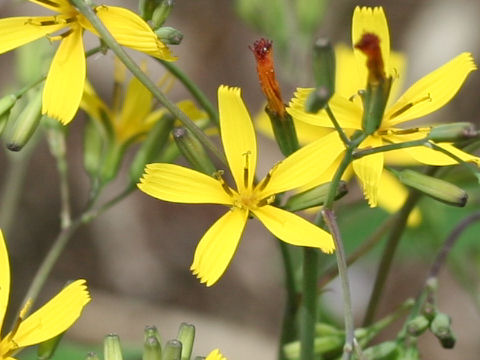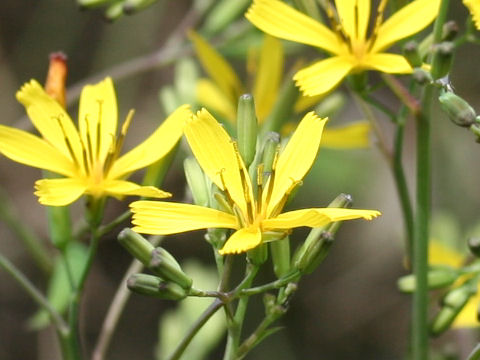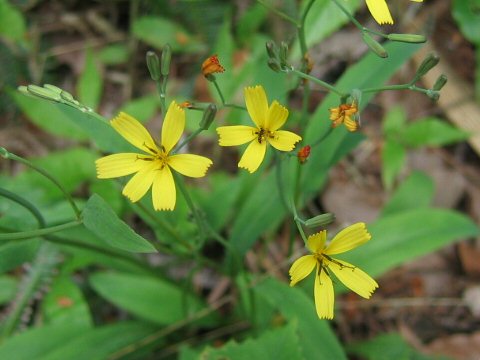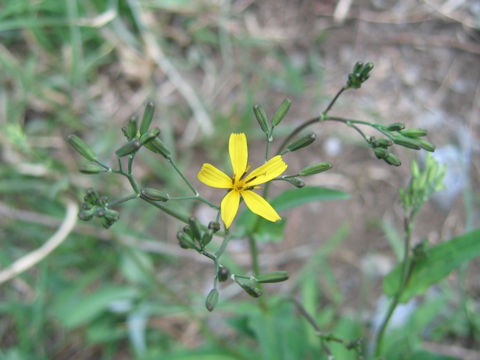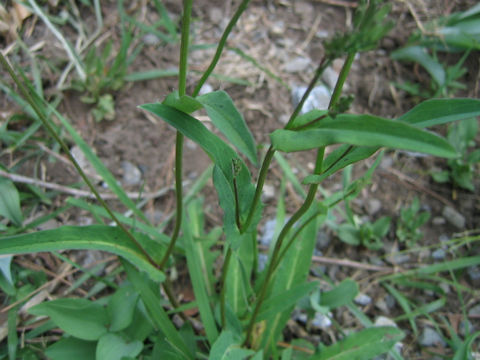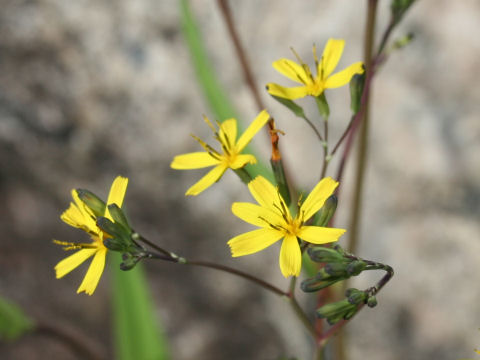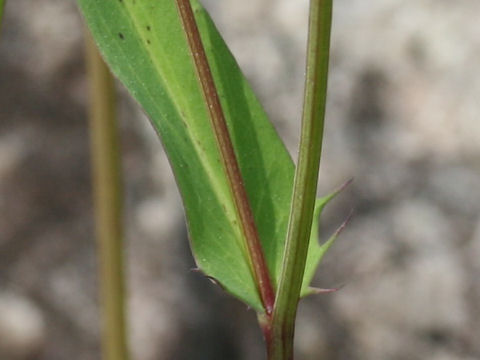
|
The Korean lettuce (Ixeris dentata) belongs to Asteraceae (the Aster family). It is a perennial herb that is distributed all over Japan, as well as the Korean Peninsula, China and Mongolia. This herb grows commonly in mountains and fields, and can reach 20-50 cm in height. The leaves are broad-lanceolate to obovate-oblong and arrnaged in alternate. The basal leaves have long petioles and the cauline leaves enfold stems with swollen round bases. The cymes are borne at the terminal branches and bloom the yellow flowers from May to July. The flower-head has usually 5-6 ray flowers, though the "Hana-nigana" (Ixeris dentata var. albiflora f. amplifolia) has 7-11 ray flowers.
In China, when a baby is born, the "five tastes" (acid, bitter, sweet, spicy, and salty) are first taught before breastfeeding. At that time, "nigana" juice is used for the "bitter" taste. In Korea, they also do it for kimchi. In Chinese, it is called "小苦荬" (xiao ku mai).
|

